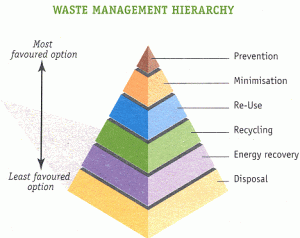2010 in review
The stats helper monkeys at WordPress.com mulled over how this blog did in 2010, and here’s a high level summary of its overall blog health:

The Blog-Health-o-Meter™ reads This blog is doing awesome!.
Crunchy numbers
A Boeing 747-400 passenger jet can hold 416 passengers. This blog was viewed about 2,300 times in 2010. That’s about 6 full 747s.
In 2010, there were 3 new posts, growing the total archive of this blog to 23 posts. There was 1 picture uploaded, taking a total of 93kb.
The busiest day of the year was May 13th with 54 views. The most popular post that day was Toronto invests in green technology with biogas digesters.
Where did they come from?
The top referring sites in 2010 were facebook.com, mariaozawa2u.blogspot.com, how2immigrate.com, student-loan-consilidation.com, and statistics.bestproceed.com.
Some visitors came searching, mostly for biogas, biogas digester, biogas china, biogas digesters, and silver gun.
Attractions in 2010
These are the posts and pages that got the most views in 2010.
Toronto invests in green technology with biogas digesters November 2009
1 comment
A living testament of gun violence in Toronto October 2008
Is the Signature Learning Experience working? October 2008
1 comment
Toronto East General Hospital Celebrates 80 Years of Service February 2009
1 comment
Flemingdon radio station vies for its spot on the FM dial May 2009
Toronto awash in sights, sounds and scents of Vaisakhi

Tens of thousands of people converged on downtown Toronto Sunday to honour the Sikh celebration of Vaisakhi.
Nathan Phillips Square was packed with people paying tribute to their religion through song, hymn, food and prayer. Held on April 24, the Vaisakhi commemorates the beginnings of Sikhism which began with philosophies of Guru Gobind Singh born April 14, 1699, in India, the 10th and final Guru (teacher) of the Sikh faith.
Sikhism is the fifth-largest organized religion in the world. Sikhism originates from the word Sikh, which derives from the Sanskrit root ’sisya’ meaning ‘disciple’ or ‘learner.’
The day marks a special occasion for many Sikhs living in Toronto like Deljeet Singh.
“The significance of today is honouring Guru Gobind Singh for giving us our identity, it was with him the foundation of our faith was laid,” said Singh. “So it’s important that we can come out here and show our kids and the rest of Toronto what our faith is all about.”
Rama Sibhu is a mother of five and for her it’s imperative that her family come out every year to support the Vaisakhi festivities. She talked of showing her kids the importance of their religion and explained the historical meaning behind the vast display of food offered at the festival.
“I love seeing all of my people here enjoying themselves. Its part of the Sikh culture to be with family and friends first to eat, then to pray as our Guru taught,” said Sibhu.
“I’ve been honouring the festival for the past 30 years and to see how much it has grown in Toronto is really important to me because it shows our strength in unity.”
Federal NDP leader Jack Layton was in attendance and said he was there

NDP federal leader Jack Layton posing with members of the Canadian Armed Forces at the Vaisakhi Festival.
to show his support and to recognize the positive contributions the Sikh community has made to Canada.
“They’ve been here for 100 years, building the railway, starting up the
forestry industry and contributing to our society in so many ways,” said Layton.
“So I’m here to say thank you and to encourage us to recognize human rights for all of us with diverse backgrounds in our country.”
US War resister pins hope on Bill C-440

During two weeks of a leave-of-absence from her work, Kimberly Rivera, 27, a married mother of three, made a life-changing decision. She left her home for good.
“Everybody has the right to feel safe, secure and have things that they need… I made the decision morally to follow my heart to Canada,” Rivera said.
She is Canada’s first female war resister and is currently living in Toronto.
Rivera, born in Mesquite, Texas, enlisted in the U.S. Army on July 14, 2001 at the age of 18 after taking an aptitude test out of “curiosity” and later signed up to be a mechanic.
She was given enlistment date following her high school graduation for the Army Reserves. In March 2006, she was sent to Ft. Leonard Wood and after passing her truck driving course she was assigned to 2-17 Field Artillery, 2nd Brigade Combat Team and 2nd Infantry Division.
In October, her reserve unit was deployed to Iraq. Some of her duties included vehicle and civilian personnel searches as well as inspecting military convoys.
On Dec. 21, 2006, when 24 mortar rounds landed just metres from where she was standing, she started to question whether “the Iraq war was worth ultimately giving her life for.”
During that two-week leave, Rivera and her husband, Mario, decided it was in their best interests not to return to active duty in Iraq. They decided to move to Canada.
Rivera’s initial pre-removal risk assessment (PRRA) the process in which Citizenship and Immigration Canada evaluates the risk claimants’ face if they’re deported back to their home country was denied.
In March 2008, she was granted an 11th-hour stay of removal, after her order of deportation was made public.
In August, she was granted a new PRRA after Justice James Russell found the PRRA Officer didn’t properly assess the risk that Rivera would face harsher prosecution based on her opposition to the Iraq War. The final decision on the new ruling can take up to four months to determine.
On Sept. 17, 2009, MP Gerard Kennedy tabled Bill C-440 in the House of Commons. It would grant permanent resident status to U.S. war resisters living in Canada on humanitarian and compassionate grounds.
The bill states that foreign nationals in Canada who, based on a moral, political or religious objection, left the armed forces of another country to avoid participating in an armed conflict not sanctioned by the United Nations, the right to remain in the country.
Kennedy said he initiated the legislation because he believes the current minority government’s view of war resisters doesn’t represent the beliefs of average Canadians.
“It was a matter of a basic sense of fairness, the conservative government is basically imposing its own personal opinion in the place of a real Canadian consensus on this issue,” Kennedy said.
Kennedy also noted that two recent Parliamentary committees called on the government to halt deportations of conscientious objectors and put in place a program to allow them and their families the right to apply for permanent resident status.
“If Parliament initiates a debate on the subject and resolves it… the government of the day has to take note of that. They’ve refused to do that on two occasions now,” Kennedy said. “They’re railroading the people who are affected in ways that are very unfortunate.”
During the 2008 Conservative convention in November, Immigration Minister Jason Kenney referred to Iraq War resisters as “cowards” and “bogus refugee claimants.”
Kennedy pointed out that in the 1960s and ’70s, during the U.S. involvement in Vietnam, Canada became a safe haven for U.S. military personnel who conscientiously objected to war.
“He (Kenney) said we didn’t accept anyone from the Vietnam War, when in fact, we accepted over 10, 000 people who came out of service during that war,” Kennedy said.
“He (Kenney) has a responsibility to stay objective, because his officials are the ones the war resisters have to appear in front of hoping to get fair treatment.”
Kennedy said the bill is meant to remedy this issue and that he would amend the legislation to compel any minister to take this category of eligibility into account as grounds for staying in the country.
While Rivera awaits a decision on her case, she believes she made the right decision and is grateful for the sanctuary she’s found in Canada.
“I wanted to live in a society that makes its own choices and does what they think is best for their people…that was more heartening for me,” she said.
“Being able to live here day by day, thankful for everyday I have with my kids, being healthy and happy is the blessing that Canada’s given me.”
Filed by Matthew Cohen
Toronto invests in green technology with biogas digesters
Imagine a streetcar running on orange peels, the traffic lights running on leftover dinner scraps and your home powered by cow manure? One day the city of Toronto hopes to be sustained by renewable energy from the organic waste we throw in our green bins, with the use of biogas digesters.
A biogas digester (also known as anaerobic digester) is technology that converts organic waste into methane gas. It has two primary components for it to work at its highest efficiency. Most typically biogas digesters are equipped with cogeneration systems, the reciprocating motor fuelled by biogas which turns the generator to produce electricity.
Biogas digesters aren’t new in fact, the first commercial biogas system originated in1850 in Bombay, India. Most commonly you’ll find home versions of digesters in developing countries such as China where there is presently six to seven million single home biogas systems in use.
 Brian Van Opstal, of Toronto’s Solid Waste Management Services, says the city collects 120,000 tonnes of green bin waste each year. That’s enough waste to produce 15 million cubic metres of biogas, enough energy to power up to 2, 000 homes for a year.
Brian Van Opstal, of Toronto’s Solid Waste Management Services, says the city collects 120,000 tonnes of green bin waste each year. That’s enough waste to produce 15 million cubic metres of biogas, enough energy to power up to 2, 000 homes for a year.
In 2002, Toronto commissioned its first anaerobic digester at the Dufferin Waste Management Facility. Its large septic tank 17 meters in diameter and 20 meters tall presently processes 30 to 35 tonnes of green bin waste each year. That’s enough to generate seven million kilowatt hours of electricity a year. According to Toronto Hydro, the annual electrical consumption of an average home is 10, 000 kilowatt hours a year.
The city has a $69 million plan to build two more anaerobic digestion plants by spring of 2011. One will be replacing the existing plant at the Dufferin site; the other will be built at the Disco Transfer Station at 120 Disco Road in Etobicoke. According to Van Opstal, the new biogas digesters will have conversion devices able to refine the gas into reusable energy, no different from the natural gas that flows through the present distribution system.
At the Dufferin site, pulped organics with a solids content of six percent are fed into the digester, a glass-lined steel septic tank with a working volume of 3,000 m3. Optimum temperature of the infeed material is 37°C (98.6 F), during colder months, a device known as a heat exchanger is used to maintain the optimum temperature.
Waste material is continuously withdrawn from the pulp and a screw press is used to separate the liquids and solids. Liquids are recycled back into a device in the digester known as a hydropulper. The capital costs for biogas utilization equipment can range from hundred of thousands of dollars to millions depending which gas utilization option is chosen. The operating costs can range from $48,000 per year to $82,000 per year, also depending on which gas utilization option chosen.
Although the anaerobic digester at the Dufferin site does produce large volumes of quality gas but there’s currently no cogeneration system installed to convert that gas into useable energy. Instead the gas is set ablaze. Van Opstal said this was due to the great deal of skepticism at the time regarding if anaerobic digestion would work to overcome the high costs involved with what was an “experimental” project.
“It’s a fact it was included in the original design but never installed…decisions were made between the design and construction phases of the project to remove it, said Van Opstal. “And that would have only been done to reduce project cost.”
Graemae Millen of CH Four Biogas, a leading developer of anaerobic digesters and biogas technology, believes biogas technology can supply whole communities with a viable source of sustainable energy from the volume of organic material the city generates.
“With the growing movement for green bin programs all across Canada, the applicability of community-based (biogas) systems is just exploding because a majority of that waste would be a viable feedstock, said Millen.”
Since 2005, all single family households – about 500,000 – in Toronto received curbside collection of organic materials. This represents tonnes of food scraps, soiled paper, disposable diapers, pet waste and other biodegradable residuals. Another 15,000 tonnes are being diverted from small commercial establishments.
Dairy farmer George Heinzle, owner of Terryland Farms in St. Eugene, has

George Heinzle's biogas digester at Terryland Farms, St. Eugene, Ontario.
already seen the benefits. The manure from the 140 cows on his farm and his two anaerobic digesters each produce 180 kilowatts per hour generating 4,000 kilowatt hours per day. That’s enough electricity to power more than a 100 homes for a year and he says he’ll double that by Christmas.
Heinzle was the first of a handful of farmers generating renewable energy using biogas digesters and then selling it back to the province at a fixed rate. Heinzle has already invested $600,000 in his digester and said that figure could go as high as $1 million as soon as his second digester is “fully operational” by December of 2009.
One of the benefits of anaerobic digestion is once the manure is processed through the digester it becomes odorless, and can be reused as fertilizer. He also said the digestion process kills pathogens, reduces methane emissions, generates heat and electricity and is will always be a sustainable source of energy. He was the first in Ontario to sell energy back to the province under the Renewable Standard Offer Program (RESOP), but many seen that system as flawed with long queuing times and high fees for energy producers waiting to connect to the grid.
Millen said the new Green Energy Act makes Canada “a continental leader when it comes to renewable energy development policy” and part of the new legislation would facilitate the development of renewable energy on a scale unseen anywhere else in North America.
Van Opstal said Toronto’s Waste Management Services initial focus was set on “waste diversion” which is processing the waste before it’s shipped to landfills. But says he recognizes the profitability of investing in projects such as biogas digesters that produce renewable forms of energy.
“One incentive for the production of electricity from renewable sources is the Feed-in Tariff program in the Green Energy Act by the Ontario Power Authority…it will pay an increased rate for producers of electricity from renewable sources,” said Van Opstal.
 The electricity produced by biomass projects is purchased at 12 cents per kilo hour which is about double the base rate. The problem for biogas producers such as Heinzle is that they’re currently locked into a 20 year contract with the Ontario Power Authority (OPA) and are unable to reap the benefits that the new Green Energy Act has to offer. Although Heinzle believes the Green Energy Act is “a push in the right direction” he feels it’s time for the federal government to intervene.
The electricity produced by biomass projects is purchased at 12 cents per kilo hour which is about double the base rate. The problem for biogas producers such as Heinzle is that they’re currently locked into a 20 year contract with the Ontario Power Authority (OPA) and are unable to reap the benefits that the new Green Energy Act has to offer. Although Heinzle believes the Green Energy Act is “a push in the right direction” he feels it’s time for the federal government to intervene.
“The problem is all the early adopters of biogas digesters, the ones who took the risks by signing with the Ontario Power Authority (OPA) we’re getting paid 12 cents per kilowatt an hour, now with the Feed-in Tariff program (FIT) everyone else is getting between 16 and a half to 21 cents,” said Heinzle.
Heinzle said if the government doesn’t quickly intervene to amend legislation of the Green Energy Act that the rising costs and inflation will put Ontario farmers out of business.
“I’m convinced that before the end of our 20 year term (with the OPA) we’ll have to shut down…unless the government admits they made a mistake,” said Heinzle. “It’s only fair that they allow us to be able to switch to the Feed in Tariff program…because with biogas digesters, we can produce electricity at a lower cost than other sources of renewable energy.”
Bill 202 takes aim at pornography on public computers
East Yorkers have mixed feelings regarding a proposed bill dealing with the censorship of sexually explicit material in public schools and libraries.
Progressive Conservative MPP Gerry Martiniuk, tabled Bill 202 in the House of Commons requiring all Ontario public schools and libraries to install filtering systems on their computers to block sexually explicit material. The bill went through the second reading on October 8th and has since been referred to the Legislation and Regulation Committee for further analysis.
“I think we should have a uniform system across this province but there are still steps to be taken before this bill becomes law,” Martiniuk said. “I urge parents to ensure that their particular library and school does use filtering equipment to protect their children.”
Martiniuk says approximately 30 per cent of libraries and schools across Ontario are filtering pornography on their computers but that still leaves 70 per cent unprotected by a filtering system.
David Moore, principal of Danforth Collegiate and Technical Institute in East York says he supports any bill that will protect children from exposure to pornographic material. But, he also mentioned the governments need to be careful that it doesn’t put in place protections that are subject to unreasonable restrictions on free speech.
“It really depends on what the details are…children need to be protected, the question is how that happens,” Moore said. “There is potential for complications when it comes to determining what constitutes as adult content and what’s not.”
The term “sexually explicit material” varies from country to country; in Canada it means any material of which the principle feature or characteristic is the nudity or partial nudity of any person.
Aaron Kapoulas has lived in East York for 15 years and is a frequent user of the Toronto Public Library at 701 Pape Avenue. He agrees with Moore that children need to be safeguarded from pornographic images and says it’s definitely “inappropriate” to use public computers to view porn. But he also says he’s concerned about the government’s role of “watchdog” when determining what should be censored.
“I can understand why the government would want to screen sexual content (on public computers), but where I’m from in Greece, there’s a lot of classical art that depicts some form of nudity…so in a sense, some nudity is OK,” Kapoulas said. “The question is…where would the government draw the line?”
Martiniuk said that there are some groups that consider it (Bill 202) a form of censorship, but expressed that he’s not suggesting that the Internet be filtered as it is in some countries such as China and Cuba, where there’s a harsher brand of censorship on Internet users, he reiterated that Bill 202 only pertains to public schools and libraries.
Lauren McNeil, an East York resident and mother of two daughters who attend Danforth Collegiate fully supports the bill and believes it will become a necessary tool to protect children from images she says can be “damaging” to a young mind.
“I’m all for the government wanting to restrict the use of computers at school. We do the same in our home; we pay very close attention to what our children surf on the net because there’s so much stuff out there that can send the wrong messages.”
Liberals maintain control as Hoskins wins St. Paul’s
The McGuinty Liberals were able to hold on to their St. Paul’s riding in a by-election on Thursday that was widely presumed to be a close race but ended up in a rout for the opposition Progressive Conservatives and New Democrats for after defeating the Tories with a majority of the vote.

Liberal Dr. Eric Hoskins wins the recently vacant riding of St. Pauls's.
Liberal candidate Dr. Eric Hoskins was declared the winner after gaining 48 per cent of the vote (13, 192), beating the Conservative’s Sue-Ann Levy who tallyed only 28 per cent (7, 851).
Spirits were high as the large turnout of cheering supporters’ raised their glasses in honour of Hoskins much anticipated arrival at his campaign party held at the Sports Centre Cafe at 49 St. Clair Ave. West last Thursday night. Hoskins, 48, who party insiders told The Observer is being groomed for a future McGuinty cabinet post is filling the seat left by former MP Michael Bryant.
When asked what were some the major concerns he heard from constituents while campaigning Hoskins responded with a range of issues that he wanted “to get to work on immediately.”
“The people here love their community and want to protect the great things they love about it such as the community schools. They want to make sure their children are in safe schools getting a solid educational foundation that will serve them well in the future,” Hoskins said. “It’s also a fact that 65 per cent of the people who live in St. Paul’s are tenants … so rent control and tenants rights is also an issue I’m looking closely at.”
Hoskins said he’s had the opportunity to speak with thousands of people the past few weeks which has given him insight on the issues that are important to the people of St. Paul’s.
Referring to the controversial single harmonized sales tax of which both Progressive Conservatives and the New Democrats had concentrated much of their attention on, he believes that the by-election was a clear signal that voters have confidence in the direction that the McGuinty government is going.
McGuinty weighed in on the fact the HST may have been a concern but there are other issues that were important to the people of St. Paul.
“He (Hoskins) is a hard worker who campaigned very well…and the people recognize he was an excellent candidate who ran for all the right reasons which is to bring a better quality of life to the people of St. Paul’s, McGuinty said.”
The Tory’s Levy, a former newspaper columnist, appeared to be Hoskins strongest opposition but was unable to break the Liberal lock on the riding. She congratulated Hoskins on his victory and said she hoped that he will be a “strong voice for the people of St. Paul’s” and at the same time warned Hoskins that she’ll be “watching him as a journalist…and will be holding his feet to the fire.”
Levy, who trailed by over 6, 000 votes said despite having minimal time to prepare coupled with a low voter turnout ran a good campaign. Also, she recognized St. Paul’s has been a strong Liberal riding for nearly the past ten years.
“With only five weeks to prepare we ran a very hard campaign…within that time frame. We were still able to get our message out to the small percentage of constituents that did come out to vote who were still unsure of how the HST will be affecting them in the near future.”
Among those in attendance at the Conservative campaign party held at Granite Brewery on the corner of Eglinton Ave. East and Mount Pleasant Road was PC leader Tim Hudak who introduced Levy to the podium to give her concession speech. He thanked the members of his caucus, volunteers and the efforts made by Levy and her supporters.
New Democrat candidate Julian Heller finished third at 17 per cent (4, 677) and Chris Chopik representing the Green party placed fourth with five per cent (1, 515).
http://www.elections.on.ca/en-CA/ElectionNightResults2009.htm
Groups push government for E.I. reform
The Good Jobs For All Coalition, in affiliation with the Toronto and York Region Labour Council, held its second of four town hall meetings to discuss fixing the Employment Insurance program, equal pay for equal work initiative and the protection of temporary workers under Bill 139.
The Workers Rights in Troubled Times meeting was held Mar. 23 at the Thorncliffe Neighborhood Office in East York. MPP Cheri DiNovo was in attendance and says her office along with the Workers Action Centre is bringing forth an amendment asking for equal pay for equal work and a limit to temporary (work) assignment. “If you’re working part-time you should be getting the same hourly rate as someone working full-time…and if you’re working for a year, you should be (employed) permanent automatically,” says DiNovo.”
Karen Dick, community organizer for the Workers Action Centre concurs with DiNovo that Bill 139 – a package of prospective amendments to the Ontario Employment Standards Act regarding temporary employment agencies – is a significant step in the right direction, but agrees that in order for the bill to be fully effective it still needs of further revision. She explains how Bill 139 fails to properly address the issue of termination and severance pay for workers employed through agencies. Currently, there’s a 17-week waiting period for severance pay for full-time workers who lose their jobs. For temp workers, the waiting period is more than double.
“Under Bill 139, a temp agency worker would have to wait 36 weeks before they’re eligible for termination and severance pay, she said.” “That would mean they would be out of work for nine months without finance before they receive any payment that every other worker (in Ontario) is entitled to.”
Guest speaker Julius Deutsch, executive assistant of the Toronto/York Region Labour Council says under Ontario law, an applicant in Toronto needs 665 hours to be considered eligible for unemployment insurance. He suggests lowering the qualifying period to 360 hours in every part of the country which in turn, would cover 78 per cent of the jobless in Ontario currently ineligible for E.I.
“The unemployment rate in Toronto now is 8.3 per cent and in the GTA it’s now at 9 per cent,” Deutsch said. “These numbers give you the sense of the magnitude of what’s happening in the unemployment levels.” He added, “This happened due to bad government policies back in the mid-1990’s with Jean Chrétien and Paul Martin. In order to deal with the deficit and cuts to social programs some harsh measures were put into effect, one of the things they done was raising the required amount of hours…in order to secure employment insurance.”
According to Deutsch, the federal government has done very little to deal with this particular problem. “In this recent federal budget the only thing the feds did was increase the duration of benefits by only 5 weeks, there should be an additional 13 weeks at the least, he said. He recommends that the federal government needs to change legislation to coincide with these difficult economical times. “There should also be a provision… if the national unemployment rate hits 6.5 per cent, then there should be mechanisms to increase the number of benefits for up to two years.”
Minorities mostly hunger in ‘food deserts’: Study
A GTA nutritionist believes that areas of Toronto are what some describe as food wastelands.
The theory of areas in Canada not having access to nutritional foods was the main focus of a lecture on April. 3 held at Ryerson University.
Dr. Samina Raja addressed a conference on Designing and Planning for Agriculture. She along with her colleagues from the University of Buffalo conducted a study of food environments in Erie County, New York. They defined some urban areas as “food deserts.”
Guy Beaumont, a nutritionist who works with obese children, believes the same may be true in communities in Toronto.
“I used to live in Regent Park and when it came to groceries, it was hard to find foods with high nutritional value,” he said. “Instead there [was] pizza parlours, burger joints and corner stores…I had to shop outside of my own neighbourhood.”
Beaumont said he’s lived in both low-income city housing and in the suburbs. He recognized the difference when it came to shopping for fresh fruits and vegetables.
“It wasn’t until I moved out of the city (to Whitby) where I could get fresh foods and that’s exactly what I tried to instill in the families I work with,” he said.
Dr. Raja explained that the access to different types of food retail outlets, in primarily minority neighbourhoods, differs from that in predominantly white neighbourhoods.
Although her study took place in Fort Erie, N.Y., she believes this is a problem that goes beyond borders and can also include diverse cities such as Toronto.
“Access to fresh foods is worse for low-income and minority neighbourhoods,” she said.
“And when the quality of food in a community is poor, the residents are vulnerable to hunger and more susceptible to diet-related diseases like heart disease, obesity and diabetes.”
Kathy Thompson, 27, is a student at Ryerson University studying Urban Agriculture and its affects on modern society.
“Having the chance to listen to her speak makes one think of the many ways our health may be at risk simply by where we choose to live,” she said.
Dr. Raja said finally that there was an absence of supermarkets that produce fresh foods in neighbourhoods of colour when compared to white neighbourhoods.
However, her study also revealed a comprehensive network of small neighbourhoods of colour. Supporting small, high quality grocer stores, rather than soliciting large supermarkets, she said may be a more effective strategy for ensuring access to healthy foods in neighbourhoods of colour in Toronto.
Toronto East General Hospital Celebrates 80 Years of Service
By Matthew Cohen
Toronto East General Hospital’s new Oncology/Haematology Clinic has officially opened its doors as part of a redevelopment plan in honour of 80 years of service to the community of East York.

(Matthew Cohen/Cohen's Gallery) Toronto East General Hospital's new Oncology Clinic at 825 Coxwell Ave.
In April of 2007, the Ministry of Health approved the first step in the hospital’s $200 million multi-phased campaign designed to revamp the infrastructure. A $6.7 million investment was issued in 2007, $3.4 million of which was allotted to redeveloping the Oncology (Cancer) Clinic. The remaining $3.3 million went towards renovation plans of the ambulatory and emergency clinics, surgical units, 280 additional beds and a respiratory centre and cardiology diagnostic laboratory.
Toronto East General Hospital opened in 1929 as a community teaching hospital affiliated with the University of Toronto. The unveiling of the new clinic on Jan.12, marked the first phase of completion in a three-stage plan spanning over the next 25 years.
The purpose of turning the hospital into a state-of-the-art facility is to ensure that East York residents are provided with improved healthcare for future generations.
Health Minister Dave Caplan says he’s pleased with positive feedback about the project and acknowledges the importance of producing results for sustainable healthcare.
“I am happy to hear that East York residents will benefit from the redevelopment,” Caplan said. “Getting shovels in the ground to improve a hospital is always a cause for celebration.”
The hospital with its 2,500 employees and 400 physicians on staff, received national recognition in the fields of cancer treatment and community healthcare.
In addition to the new clinic, the redevelopment includes major renovations to accommodate the increase of patients in the past several years. Today, the hospital receives annually 240,000 patients, 60,000 being emergency visits.
Mikki Layton, manager of medicines of oncology at TEGH, felt there was a “desperate” need for redevelopment and as a result says patients now have access to more space and comfortability.
“With better facilities we’re able to receive an increased volume of patients in a more timely manner,” Layton said. “Reducing the wait times.”
Caplan said lowering wait times in Ontario is one of his priorities. His ministry has committed an extra $235 million to reducing wait times.

The new clinic was built to accomadate the rise in patients and to provide more efficient service. (Matthew/Cohen's Gallery)
“Our government is going to continue to look for strategies that will help us reduce wait times – whether it’s by redeveloping and expanding hospitals, hiring more doctors and nurses, or funding more strategies,” Caplan said.
This makes patients receiving care at the hospital feel they’re getting the best treatment possible.
In 2004 Rachael Smith was diagnosed with breast cancer. After nearly two years of expeditious treatment, in December of 2005, there was no more evidence of the disease. She believes it’s important for the government and citizens to show their support.
“I think it’s important for everyone to do what they can to ensure wait times, research and information on prevention is disseminated to people,” Smith said. “Anyone who’s faced with a life threatening disease can feel drained from their mental and physical resources. The less time you have to wait for treatment the better it is.”
To show support and appreciation for Toronto East General and Princess Margaret hospitals, Smith, along with her husband Andrew Howard, created the Yard Sale for the Cure charity in 2005 in their local area of the Beaches. The charity now spans across Ontario, raising money for cancer research with plans to expand nation wide.
“When you’re there (TEGH) you’re treated with the love and respect that you would get from a family member,” Smith said. “I felt it was really important to try and support them.”
TTC drivers suffer from post-traumatic syndrome

TTC drivers are pushing officials to put an end to the increasing violence occurring on the city’s public transit system.
Among the kinds of abuse TTC drivers have faced over the years, such as vicious beatings, death threats, and in one incident being shot at with an air rifle.
The Toronto Star reports nearly 200 TTC bus, streetcar and subway operators are suffering from post-traumatic stress disorder (PTSD) at a rate four times that of Toronto police officers, which is the second leading cause of lost time for TTC employees.
According to the Canadian Mental Health.ca, PTSD is often related to witnessing or experiencing a traumatic event involving threat of injury or death. Symptoms include a general numbing of emotional responsiveness, recurrent re-experiencing of the event through flashbacks, nightmares caused by reminders of the traumatic experience as well as hyper arousal, trouble sleeping, irritability, anger and difficulty of remembering things.
Dr.Alain Brunet, psychiatry professor at McGill University explained to The Star, “You live in an increasingly narrow life and, on top of that, (you) are in a kind of hyper-arousal state, ready to fight or flight.”
He added, “Sufferers don’t sleep well, they have problems concentrating, easily distracted, easily startled and they may have a short fuse.”
An 11 year TTC veteran, John, who wishes not to have his name revealed for fear of reprisal, is all too familiar with the on-going violence occurring on the transit system.
“When I hear stories from other operators, it’s sad, but I’m not surprised,” John said.
He continued, “For me there have been plenty of incidences. One time this guy tried to get on my bus using a fake metropass, I asked him if I could see it and he started cursing at me, before I could blink he punched me right in the face then took off. In the end all that matters is that I make it home safe to see my kids.”
TTC chair Adam Giambrone in an interview told the Toronto Star, “I think we have an obligation to do something, this is unacceptable. We have to take this seriously. This is about respect and safety for our operators. They didn’t sign up for this.”
As a deterrent, the TTC plans to install plastic shields which will cost $1,500 for each bus as part of a $34 million project to install cameras on buses, streetcars and subway stations. A TTC official says the commission will consider doubling the constables by 2011.
-
Archives
- March 2011 (1)
- September 2010 (3)
- November 2009 (5)
- May 2009 (4)
- February 2009 (2)
- October 2008 (8)
- October 2007 (1)
-
Categories
-
RSS
Entries RSS
Comments RSS

